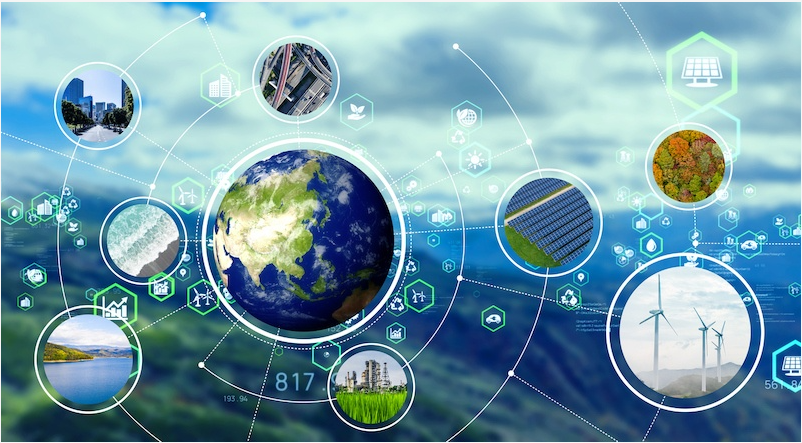With climate change accelerating and time running out to decarbonize societies and to build resilience, technologies that can significantly shift the needle in terms of slashing greenhouse gas emissions and helping societies to adapt are urgently needed. To this end, the UNFCCC Technology Mechanism met in Songdo, Republic of Korea, last month to discuss the implementation of a new work programme.
The programme is focused on high-potential sectors and high-impact actions for innovation and development and transfer of transformative technologies, ranging from renewable forms of energy to sustainable transport, combined with effective policies.
The members of the Technology Executive Committee (TEC) and Climate Technology Centre and Network Advisory Board (CTCN) – the two bodies of the Technology Mechanism under the UN Framework Convention on Climate Change and the Paris Agreement discussed key examples of technologies that are transferable and scalable and can bolster national climate plans under the Paris Agreement (Nationally Determined Contributions, or “NDCs”). Here are three such examples:
Technology Action for Climate Empowerment in Uganda
Uganda’s Action for Rural Women’s Empowerment (ARUWE) is pioneering women-led energy cooperatives, utilizing climate technologies including photovoltaic solar panels, charcoal briquettes, and biogas to ensure a just energy transition in the country. The cooperatives, which include members from rural and indigenous communities, use a decentralized and cooperative renewable energy system to produce and distribute reliable and cost-effective energy to households, small businesses, and health centres. With a mission to empower rural women in Uganda and contribute to improving energy generation, access, and utilization from renewable sources, the cooperatives have formed an advocacy network to reach the district and national government to demonstrate the co-benefits of decentralized energy technologies in climate change mitigation and sustainable development.
Triangular cooperation on renewable energy technology transfer in Ghana and Zambia
In an impressive display of triangular cooperation on renewable energy technology transfer in Ghana and Zambia with China and the UN Development Programme UNDP, two African countries have managed to curb energy sector emissions. Triangular cooperation involves Southern-driven partnerships between two or more developing countries supported by a developed country or multilateral organization to implement development cooperation programmes and projects. Since its launch in 2015, the initiative has sought to transfer a suite of renewable energy technologies, including solar, small hydro power, biogas, and biomass cookstoves, to both Ghana and Zambia, and has made significant strides in meeting the national climate targets of both countries under the Paris Agreements. With international support, Zambia expects to be able to reduce emissions by almost 50%, and the Ghanaian government could set the unconditional target of reducing greenhouse gas emissions by 45% below business-as-usual levels by 2030.
Electric mobility in Cambodia
Cambodia is promoting low-emission transport modes by implementing electric motorcycles and a network of charging and maintenance stations. This technology, along with an incentive programme, is designed to reduce emissions, air pollution, and operating costs, while also providing significant economic benefits. The government, with the support of Global Green Growth Institute (GGGI), plans to introduce an electric bus system in Siem Reap at a cost of USD 16 million from 2022 to 2024, and a Green Climate Fund (GCF) project proposal was to roll out 1,000 electric motorcycles in the space of a year. This move aligns with Cambodia’s NDC mitigation target of reducing transport sector emissions through low-emission transport modes.
What’s next for the UNFCCC Technology Mechanism?
What should technology experts, practitioners and enthusiasts look out for in the coming months?
- The third and final part of technical dialogues of the first Global Stocktake under the Paris Agreement is set to take place at the 58th session of the Subsidiary Bodies in June 2023 (SB 58), which presents a unique opportunity to enhance collective action on climate technology.
- The TEC will launch its work on water-energy-food nexus by hosting a thematic dialogue at the SB 58 in collaboration with FAO.
- The TEC will convene an event at the SB 58 with financial actors to raise awareness of the results of the Technology Needs Assessment (TNA) process in the broader climate change community.
- The TEC and CTCN will co-organize a Technology Mechanism side-event at SB 58 to share outcomes of their work on national systems of innovation.
Technology stakeholders are invited to actively participate in the activities above and add their voices to the collective efforts towards advancing the climate technology agenda under the UNFCCC and Paris Agreement.
More information
The first edition of the joint TEC and CTCN publication on ‘technology and National Determined Contributions (NDCs)’ was published in 2021, and the updated version, which includes the abovementioned examples from developing countries that showcase the role of technology in the implementation of countries’ NDCs, will be launched later this year.
Updates on the activities of the Technology Mechanism are available at https://unfccc.int/ttclear, and regularly posted in the UN Climate Change Technology Linkedin group. The TEC may be contacted through the UNFCCC secretariat at tec@unfccc.int.
All meeting documents and recordings from the 26th meeting of the TEC and the 21st meeting of the CTCN Advisory Board are available online.

